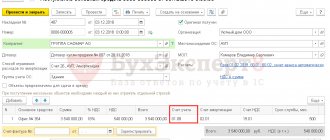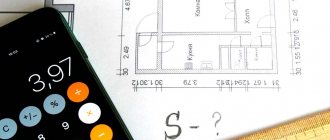How to understand that the encumbrance has been lifted
For the convenience of clients, a corresponding notification will be sent to the client’s phone number specified in the questionnaire. When changing your phone number, you must notify the lender and switch your mobile bank, otherwise the message will be sent to the linked number and the user may not receive it.
How the operation is carried out:
- After repaying the mortgage, the borrower receives an SMS notification from the lender about the start of the process. Message delivery time is 2 days;
- The SMS notification will contain a link so that you can enter your DomClick personal account;
- The procedure takes 30 days, for example, the mortgage is repaid on July 15, which means the restrictions will be lifted no earlier than August 14;
- The borrower will receive an SMS notification about the removal of the encumbrance.
After logging in via the specified link, the borrower will be able to see the status of the operation and control its changes.
Sale of an apartment with an encumbrance
Is it possible to sell and buy an apartment with an encumbrance? Can. And in some cases it's even relatively safe. For example, there is a widespread practice of buying/selling an apartment with a mortgage, when the new owner simply pays the remaining amount to the bank instead of the previous one.
Encumbrances associated with the historical value of the house do not interfere with transactions at all. Emergency housing can also be purchased, knowing the consequences. However, some cunning citizens specifically buy emergency apartments at a very low price, and then, through legal proceedings, try to inflate compensation by one and a half to two times.
The only encumbrance that completely makes it impossible to transfer ownership is a court arrest or a ban on one of the owners from performing registration actions.
If you buy an apartment with encumbrances, do not hesitate to reduce the price. As a rule, mortgaged apartments on the market are presented at a cost that is less than the average of 10 percent. For apartments with other types of encumbrances, their value can be reduced by up to 50% of the market price.
What to do if you haven’t received an SMS
There are failures and the SMS does not reach the recipient. This may happen when changing the phone number, if the bank has additional questions for the borrower.
In this case, you can write an application to remove restrictions on the DomClick website.
You will need to enter information about the borrower, the parameters of the loan agreement, and provide other necessary information. After filling out, the application is sent to the bank for consideration; the procedure terms are standard.
If you need to speed up the process, you can contact the Support Service or write a request on the website. In this case, the procedure will be carried out in agreement with the bank earlier than the established deadlines.
An encumbrance is a type of restriction of ownership rights to a property. In other words, the owner cannot sell it without the consent of third parties or the state. Such apartments can be found both in new buildings and on the secondary market. If there are encumbrances on the living space, persons who are not the registered owners may claim rights to the living space.
Types of encumbrances
1. Mortgage is the most popular encumbrance today. The owner of the property is the bank, and the owner cannot sell the apartment without its permission.
2. Registered minor children are the second most common burden. If children under 18 years of age are registered in the apartment, it is necessary to check whether the purchase and sale transaction does not violate the rights of the child. Especially if the apartment was purchased with the participation of maternity capital funds. If the transaction is incorrectly executed, adult citizens may subsequently claim a share in the apartment.
3. Seizure of real estate - does not occur too often. The reason for this may be a debt to a bank or a private creditor, division of property during a divorce, or debt for housing and communal services. In these cases, bailiffs can seize the apartment by court decision.
4. Lease is a rare type of encumbrance in our country. There have been situations where an apartment was sold when tenants lived in it and had officially entered into an agreement with the owner. In this case, the new owner gets the tenants along with the living space, who continue to pay for the housing.
5. Rent is also rare in the real estate market in Russia. Often, older people sell their apartments with the condition of living in them for life. If title is transferred to a new owner, the rentee cannot be evicted.
6. Agreement for free use. Most of the real estate built in the 90s was state or municipal property. When selling or transferring it into private hands, it was possible to refuse privatization in favor of another person, while retaining the right of perpetual use. Such a tenant cannot be evicted from the apartment and deprived of his right of residence.
7. Testamentary refusal. According to the owner's will, a person receives the right to live in the apartment. He does not lose it even when the owner of the property changes. (Article 1137 of the Civil Code of the Russian Federation).
How to detect encumbrances?
When buying a home, you need to carefully check all the documents and protect yourself from intruders by ordering an extract from the Unified State Register of Real Estate.
Now all information on real estate objects is as accessible as possible. An extract from the Unified State Register costs from 250 to 350 rubles, depending on the type of document. All the information is indicated there - who is the owner, share in the property right, whether there is an encumbrance, area of the premises, etc. Thus, having received such an extract, a person can get a primary idea of the object and find out whether it is burdened with the rights of third parties and which ones.
Today, it is almost impossible to sell a share without the consent of other owners, since such transactions are subject to notarization (Article 42 of the Law on State Registration of Real Estate). In addition, if the share is sold to a third party, documents must be attached to the application for registration of ownership rights that the seller has notified in writing the other participants in shared ownership of his intention to sell his share, indicating the price and other conditions.
The agreement for the donation of a share is also subject to notarization, but does not require the consent of other owners and their prior notification of the upcoming donation. It is important to know these standards and use them correctly in practice.
If the encumbrance was discovered after purchasing the apartment?
The owner has the right to demand that the seller terminate the contract. According to paragraph 1 of Article 460 of the Civil Code of the Russian Federation, the seller is obliged to transfer the goods to the buyer free from any rights of third parties, except for the case when the buyer agreed to accept the goods encumbered by the rights of third parties.
Thus, in order to terminate the transaction, it is necessary to send demands for termination of the contract to the seller, and in case of refusal or failure to receive a response, go to court. Moreover, if you can find out about a mortgage from an extract from the Unified State Register of Real Estate, you can only find out about an encumbrance based on a residential lease agreement concluded for a period of less than a year from the seller.
Today the real estate market is filled with a wide variety of offers for the sale of housing. Apartments with encumbrances are not always scary, since some types of them can be removed immediately after the cause of the encumbrance is eliminated.
The main thing is to carefully study the documents to save time and nerves, and order an extract from the Unified State Register in advance. Specialists of the Cadastral Chamber recommend doing this as close as possible to the planned date, since the data contained in the Unified State Register of Real Estate is constantly updated.
How to check the removal of an encumbrance
There are different ways to check whether restrictions on the disposal of real estate have been lifted. In the Rosreestr reference service
Procedure:
Open the Rosreestr website using the link;
- Create a request for background information;
- The column “Rights and restrictions” is not filled in;
- Send a request.
On the State Services website
If the borrower has an identified account on the State Services portal, he will be able to obtain information using the portal.
You will need the following:
- Log in to the site;
- Open a personal account on the Rosreestr website;
- The necessary information will be placed under “My objects”.
Types of encumbrance
The legislation provides for various encumbrances:
- If the property was transferred as collateral to secure a loan.
- In case the right of use is granted for one year or a longer period.
- When property is seized.
- In any situation where a trust has been appointed in accordance with legal requirements. This, for example, happens in case of bankruptcy, guardianship or trusteeship.
- Sometimes an encumbrance is imposed for the purpose of performing certain types of work. They are imposed by government agencies within the limits of their powers.
- There are also some other situations provided for by law in which the imposition of an encumbrance is provided.
Registration can occur using the following documents:
- act of a state body or local government;
- agreement on a transaction that relates to a given piece of real estate;
- legislation;
- a court decision that has entered into force.
Each of these options will be discussed in more detail below.
Pledge
This is one of the forms of securing a transaction. The best known use is the use of collateral to secure a loan. It is stipulated that in case of full or partial non-payment of the loan, the bank can sell the collateral to compensate for its losses. It is important to note that if the proceeds exceed the required amount, the balance must be returned to the collateral owner. This method should compensate not only the principal amount of the debt, but also the interest specified in the agreement.
Sometimes it is possible that the collateral reduces its value or loses it completely. For example, if a house collapses, the apartment that was in it and was collateral can no longer be sold. If a car was left as collateral, but it was involved in an accident or was stolen, then it cannot be used to compensate for losses.
To prevent this from happening, the borrower must insure the property against damage or destruction. If the events listed above occur, the corresponding amount will be paid and the bank will not lose anything. Such a requirement is usually not specified directly in the contract; however, without an insurance contract, the loan may not be issued at all or issued on less attractive terms.
Definition and legislation
Encumbrances on a land plot mean prohibitions and conditions imposed on it that limit its use. Moreover, these restrictions are often not removed with a change in the owner of the site and are tied to the land itself, and not to the owner.
The encumbrance of a site can be understood as:
- restriction of land in circulation (for example, having it as collateral for a mortgage loan);
- providing it for use by other persons (for example, easement);
- limited permitted use (for example, a ban on industrial development in environmental zones).
Article 11.8 of the Land Code describes the ways in which encumbrances may arise on a site:
- in clause 2, the right to unlimited and free use;
- in clause 4, the specifics of the lease agreement;
- clause 5 – methods for establishing the boundaries of easements.
Locally, the legal norms of the Land Code regarding encumbrances on land plots are supplemented by municipal legislative acts.
Trust management
The owner has the right to transfer real estate to the so-called trust management. Such a transfer of property does not entail the transfer of rights to ownership of the same property to a trustee, who now undertakes to regularly manage the property in the interests of the copyright holder or any other person designated by the copyright holder.
Rights to real estate that are related to its disposal on trust are registered exclusively and only on the basis of documents that in turn determine the attitude of the owner or other managing person, including those based on the relevant decision of the court or simply a concluded agreement.
An onerous agreement for trust management of real estate is concluded only in writing as an onerous document. Trust management, as well as the transfer of real estate, is subject to mandatory state registration in the same manner as in the case of transfer of the right to own property.
Failure to comply with certain forms of the agreement that is drawn up for subsequent trust management makes it completely invalid.
Arrest
This measure limits the right to dispose of property. It cannot be sold or given away, but it can be used without additional restrictions. A record of the imposition of an encumbrance on a property is indicated in the Unified Register of Rights to Real Estate.
Seizure can be imposed by a court, preliminary investigation, or a bailiff on certain property. Once the need for it ceases, the arrest will be lifted. The owner is obliged to ensure the safety of the property during its validity.
Lease restrictions
According to the lease agreement, the landlord agrees to give certain property for temporary use to the tenant or tenant. Land
plots, except those that have been withdrawn from circulation, are leased in accordance with the current Land Code and civil legislation of the Russian Federation.
An onerous agreement must be concluded only in writing and must have the signatures of both parties to the transaction. Failure to comply with the form of the concluded agreement completely deprives it of legal force. It is worth mentioning that one of the parties can apply for registration; in other words, only one application from the same, for example, tenant, is quite sufficient.
When leasing a land plot or part of it, a cadastral plan of the entire plot indicating the part that was directly leased is attached to the encumbrance agreement. However, with the delivery of structures, buildings or some part of the premises, the situation is a little more complicated. In this case, a floor plan of the entire building or structure must be attached to the contract, on which the territory intended for rent must be indicated, and its entire area must also be indicated.










